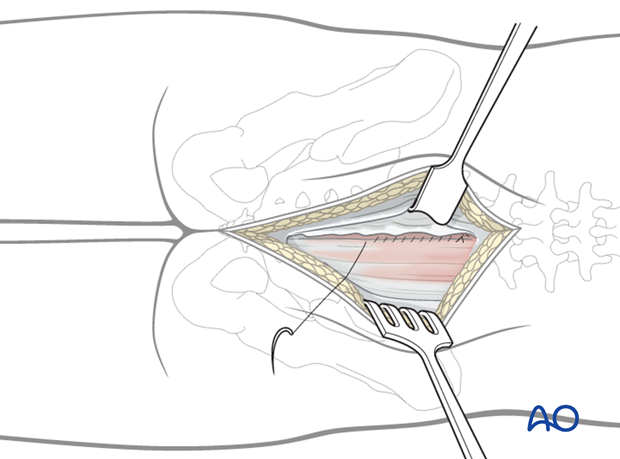Posterior midline approach to the sacrum
1. Indications
A posterior midline approach to the sacrum is indicated for exposure of its posterior surface and the posterior aspects of both SI joints, and adjacent posterior ilium.
It is typically used for fixation of sacral fractures or decompression of sacral nerve roots.
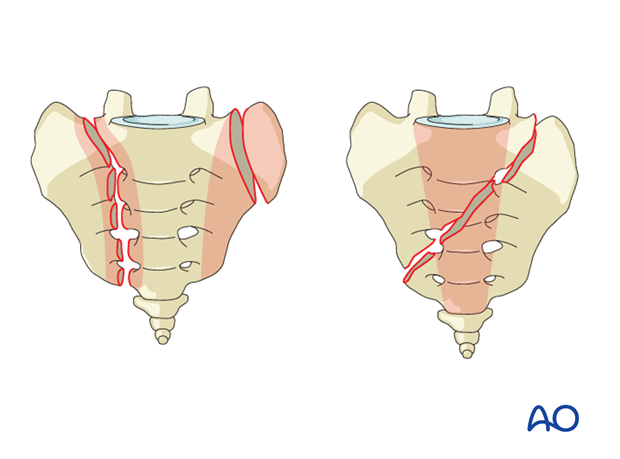
2. Skin incision
The location and length of the skin incision varies according to the location of the fracture and the type of fixation.
Use a midline incision to expose both sides of the sacrum.
Note: Posterior approaches through severely contused or crushed tissue or sites of subcutaneous hematoma (Morel-Lavallée lesions) may cause significant wound healing problems.
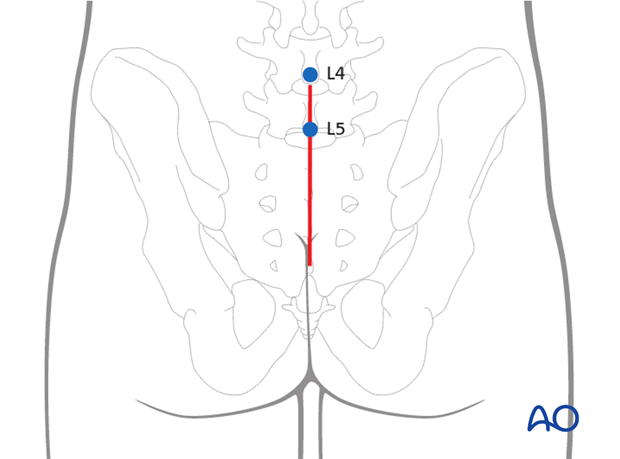
3. Transection of the muscle aponeurosis
Incise the lumbosacral fascia parallel to the spinous processes L4 and L5 on the injured side.
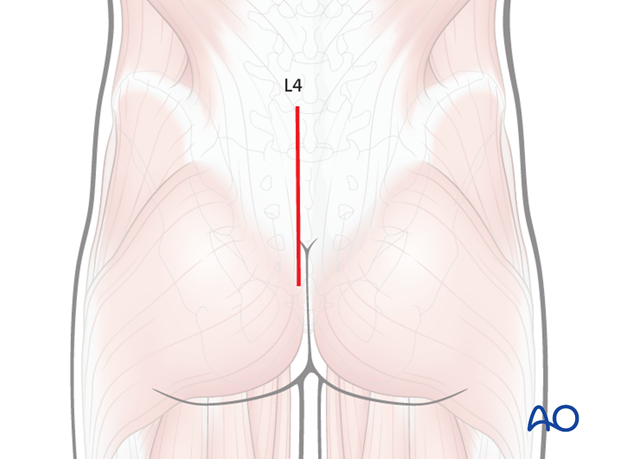
4. Dissection
Subperiosteal elevation of the Iumbosacral musculature exposes the posterior aspect of the sacrum.
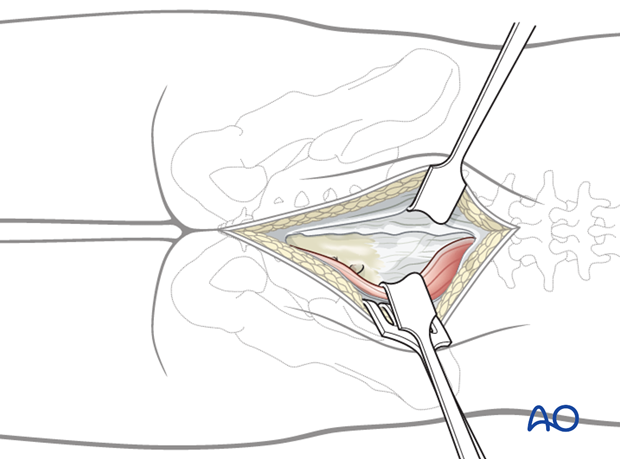
This is typically done by incising the multifidus insertion medially and elevating it laterally.
If a more extensile exposure of the lateral sacral region („ala“) is necessary, elevate the complete muscle mass by dissecting its lateral attachment to the posterior iliac crest.

5. Wound closure
Initiate the closure of the wound by a gentle repositioning of the erector spinae muscles and reattachment of the superior origin of the gluteus maximus.
Close the subcutaneous tissues and skin in layers.
